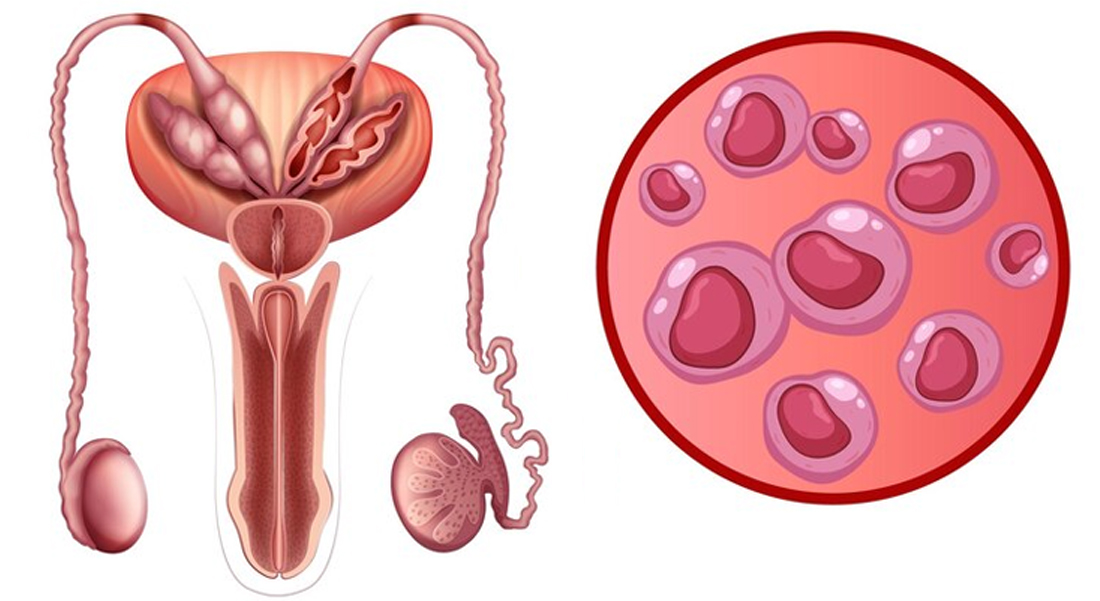Chlamydia Testing Unveiled: Navigating Types, Accuracy, and Your Options
Chlamydia is known to be the most frequent sexually transmitted infection (STI) globally. It often remains asymptomatic, making regular testing and early detection critical for effective treatment and prevention of its spread. In fact, research shows that around 70% of women fail to notice any symptoms of chlamydia.
In this blog, we’ll explore the different types of chlamydia tests available, their accuracy, and where you can get tested. Whether you’re sexually active or simply seeking information, understanding the ins and outs of chlamydia testing is vital for your sexual health.
If you’re diagnosed with the STI, you must schedule an online consultation for chlamydia and get treated instantly. However, before starting treatment, you must know the different types of testing options you have available.
So, let’s get started!
Types of Chlamydia Tests
Chlamydia tests come in various forms, each with its own set of characteristics and use cases. You can schedule a chlamydia consultation online to find out which test option can be best for you.
Let’s explore the primary types of chlamydia tests:
Nucleic Acid Amplification Tests (NAATs)
Nucleic Acid Amplification Tests, or NAATs, are the gold standard for chlamydia testing. They work by detecting the genetic material of the chlamydia bacterium. Here’s a closer look at NAATs:
What are NAATs?
NAATs are highly sensitive molecular tests that can identify chlamydia with remarkable accuracy. They work by amplifying the DNA or RNA of the chlamydia bacterium, making it easier to detect even small amounts of the pathogen.
Accuracy and Reliability
NAATs have an exceptional level of accuracy. They boast sensitivity and specificity levels that can exceed 95%, meaning they correctly identify positive cases and exclude negative cases with high precision. This makes them particularly valuable for routine screening and diagnostic purposes.
Urine Tests
Urine tests are another common method for chlamydia testing, especially among individuals who find other methods invasive or uncomfortable. Let’s explore how they work and their pros and cons:
How do Urine Tests for Chlamydia Work?
Urine tests, also known as nucleic acid tests, involve providing a urine sample, usually the first-morning urine, which contains cells and proteins that may carry chlamydia bacteria. The sample is then analyzed to detect the presence of chlamydia DNA or RNA.
Pros and Cons
Urine tests are non-invasive and convenient. They can be conducted at home and do not require uncomfortable swabs. However, urine tests may be less sensitive than some other methods, and the accuracy can vary based on the quality of the sample and the timing of the test. For men, urine tests tend to be more reliable than for women due to differences in male and female anatomy.
Swab Tests
Swab tests are a direct way to collect samples from the areas where chlamydia often resides. The most common swab tests are for vaginal, cervical, and urethral samples. Let’s explore these methods and their sensitivity and specificity:
Vaginal, Cervical, and Urethral Swab Tests
These swab tests involve a healthcare provider leveraging a cotton swab to gather samples from the vagina, cervix (for women), or urethra (for men). Your samples are analyzed for the presence of chlamydia.
Sensitivity and Specificity
Swab tests, when conducted correctly, are highly sensitive and specific, making them reliable methods for chlamydia detection. However, the accuracy depends on the proficiency of the healthcare provider and the quality of the sample collected.
Blood Tests
Blood tests, also known as serologic tests, are less common for chlamydia but have their applications. Here’s how they work and their limitations:
How Blood Tests Work
Blood tests for chlamydia detect antibodies that the body produces in response to the infection. They are typically used in cases where other methods may not be effective, such as diagnosing chlamydia-related complications.
Limitations and Uses
While blood tests can be useful for specific purposes, they are less effective for routine chlamydia testing because they may not detect the infection during its early stages. Blood tests are more commonly used for diagnosing complications like pelvic inflammatory disease (PID) or reactive arthritis caused by untreated chlamydia.
Accuracy of Chlamydia Testing
Now that we’ve explored the various types of chlamydia tests, it’s essential to understand the factors that impact the reliability of these tests.
Factors Affecting Test Accuracy
- Timing of Testing: The accuracy of chlamydia tests can be influenced by the timing of the test concerning potential exposure to the infection. For example, testing immediately after exposure may yield false-negative results because it can take a few days to weeks for the infection to become detectable.
- Quality of the Sample: The collected sample’s quality in swab tests is crucial for accuracy. If the sample is not collected correctly or is contaminated, it can lead to inaccurate results.
- Test Type: Different types of chlamydia tests have varying levels of sensitivity and specificity, as discussed earlier. The choice of the test can significantly impact accuracy.
Sensitivity and Specificity
To better understand chlamydia test accuracy, it’s important to know two key terms: sensitivity and specificity.
- Sensitivity: Sensitivity measures how well a test correctly identifies individuals who have the infection (true positives). A highly sensitive test will have few false-negative results, making it effective at catching positive cases.
- Specificity: Specificity measures a test’s ability to correctly identify individuals who do not have the infection (true negatives). A highly specific test will produce few false-positive results, meaning it accurately excludes negative cases.
False Positives and False Negatives
Understanding false positives and false negatives is crucial when interpreting chlamydia test results.
- False Positives: These occur when a test wrongly indicates the presence of chlamydia in a person who does not have the infection.
- False Negatives: False negatives happen when a test wrongly shows that a person is not infected when, in fact, they are. False negatives can result from testing too soon after exposure or due to issues with the sample or test sensitivity.
It’s important to remember that no test is perfect, and false results can occur. If you receive a positive test result, it’s essential to confirm it with a follow-up test, especially if you are asymptomatic or at low risk for chlamydia.
Where to Get Tested for Chlamydia
There are several options available, each with its own advantages and considerations.
Healthcare Providers
- Primary Care Physicians: Your primary care doctor can provide chlamydia testing as part of routine check-ups or upon request. This option is convenient if you already have an established healthcare provider.
- Gynecologists/Obstetricians: For women, gynecologists and obstetricians can offer chlamydia testing as part of reproductive health care. They are experts in women’s sexual health and can guide you on appropriate testing.
- Urologists: Men can consult urologists for chlamydia testing. These individuals specialize in the urinary and reproductive systems and can provide relevant care and testing options.
Sexual Health Clinics
Sexual health clinics specialize in STI testing and education. They offer comprehensive testing services for various STIs, including chlamydia. These clinics often offer walk-in services. However, they may have longer wait times, and your visit might not be entirely private. Additionally, some services may charge fees based on your ability to pay.
At-Home Testing Kits
At-home chlamydia testing kits allow you to gather a sample in the privacy of your own home and send it to a laboratory for analysis. You’ll receive the results discreetly. This option is convenient and private. However, ensure that you use a reputable kit and follow the instructions carefully to obtain accurate results. You may need to pay for the kit, and some people may find self-collection uncomfortable.
Online Telemedicine Services
Several online telemedicine platforms now offer chlamydia testing services. You can consult with a healthcare provider remotely, receive a lab order for testing, and have your sample collected at a local facility. This option offers convenience, particularly for those who prefer remote consultations. They are also discreet. However, the accuracy of the test is highly dependable on the quality of the sample and the laboratory used for analysis.
Once you get tested, it is essential to book online consultations for chlamydia. This will ensure you get treated as soon as possible.
Preparing for Chlamydia Testing
Now that you know where to get tested for chlamydia, it’s important to understand how to prepare for the testing process. Proper preparation can help ensure the accuracy of your results.
What to Expect During the Testing Process
The testing process may vary slightly depending on the type of test and the location where you choose to get tested. Here’s what you can generally expect:
- Sample Collection: You will be asked to provide a sample, which could be urine, swab, or blood, depending on the test you’ve chosen or your healthcare provider’s recommendation.
- Privacy and Confidentiality: Testing locations are committed to maintaining your privacy and confidentiality. Whether you visit a healthcare provider or use an at-home kit, your personal information and results are typically kept secure.
- Patient Information: You may need to provide some basic information about your sexual history, including the number of sexual partners, condom use, and any symptoms you’ve experienced.
When to Schedule a Test
The timing of your chlamydia test is essential for accurate results:
- After Exposure: If you suspect recent exposure to chlamydia, it’s advisable to wait for at least 2-5 days before getting tested. This allows the infection to become detectable.
- Regular Screening: If you’re sexually active and not in a monogamous relationship, annual chlamydia screening is recommended, especially for sexually active individuals under 25. Depending on your risk factors, more frequent testing may be needed.
- Follow-Up Testing: If you’ve previously tested positive for chlamydia and received treatment, follow-up testing is crucial to ensure that the infection has cleared.
Necessary Precautions
Here are some precautions to keep in mind before getting tested for chlamydia:
- Abstain from Urination: If you’re getting a urine test, avoid urinating for at least 1-2 hours before the test to ensure a concentrated sample.
- Discuss Medications: Inform your healthcare provider or testing service about any medications you’re taking, as certain drugs can affect test results.
- Sexual Activity: It’s a good practice to abstain from sexual activity for a few days before the test to minimize the risk of false-negative results.
Interpreting Chlamydia Test Results
Understanding your chlamydia test results is vital. Here’s how to interpret them:
Understanding the Test Results
- Positive Result: A positive result means that chlamydia was detected in your sample. It indicates an active infection that requires treatment.
- Negative Result: A negative result means that chlamydia was not detected in your sample. However, a negative result does not necessarily mean you’re free from chlamydia, as it could be a false negative.
What a Positive Result Means
If you receive a positive test result, it’s important to take action:
- Chlamydia is easily treatable with antibiotics. You can get online chlamydia prescriptions with services like Get Care MD. The experts will prescribe the appropriate medication to clear the infection. With this service, you can also receive an online consultation for oral chlamydia.
- Inform your sexual partners about your diagnosis so they can also get tested and treated if necessary.
- After treatment, follow-up testing is essential to confirm that the infection has been cleared.
What a Negative Result Means
A negative result can be reassuring, but it’s important to keep a few things in mind:
- As mentioned earlier, false negatives can occur. If you have symptoms or are at high risk, consider follow-up testing or consult your healthcare provider.
- Regardless of your test result, practicing safe sex with consistent condom use and regular testing if you have multiple partners is the best approach for preventing chlamydia.
Chlamydia Testing and Public Health
Chlamydia testing plays a significant role in public health for several reasons:
Early Detection and Treatment
Early detection and treatment of chlamydia are critical to prevent additional complications, including the likes of pelvic inflammatory disease (PID) in women and epididymitis in men. Untreated chlamydia can also lead to infertility.
Preventing Transmission
Chlamydia is highly contagious. Timely testing and treatment help prevent the spread of the infection to sexual partners, reducing the overall prevalence of the disease.
Educational Outreach
Chlamydia testing and awareness campaigns help educate the public about the risks, symptoms, and prevention of chlamydia. Public health initiatives aim to reduce stigma and promote responsible sexual behavior.
In Summary
Chlamydia testing is a fundamental aspect of sexual health. Knowing the types of tests available, their accuracy, and where to get tested empowers individuals to take control of their well-being. Remember these key points:
- Choose the appropriate test based on your circumstances and preferences.
- You must stay vigilant of factors that can affect test accuracy.
- Follow recommended testing guidelines and consider regular screening if you are sexually active.
- Understand your test results and take prompt action if necessary.
- Partner notification and follow-up testing are crucial for managing chlamydia.
- Chlamydia testing is not only about personal health but also contributes to public health by preventing the spread of this common infection.
By staying informed and taking responsible steps, you can protect your sexual health and contribute to a healthier, safer community. Regular testing, early detection, and responsible sexual behavior are the cornerstones of effective chlamydia prevention and control.
Take control of your chlamydia treatment online with GetCareMD. Get started for quick and comprehensive care today.
Read: Understanding Chlamydia Testing: Types, Accuracy, and Where to Get Tested for Your Sexual Health
Final Conclusion: Take charge of your sexual health with knowledge! From types of chlamydia tests to interpreting results, this guide empowers you. Don’t just get tested—get informed.
CTA: Ready for empowered sexual health? Schedule your online chlamydia consultation with GetCareMD – quick, discreet, and comprehensive care at your fingertips!



